A Water War Is Underway
in Santa Barbara County’s
Carrot Country
Cuyama Valley’s Biggest Water-Guzzlers
Forcing Everyone Else into Expensive Battle
over Groundwater Rights
by Melinda Burns | July 5, 2023
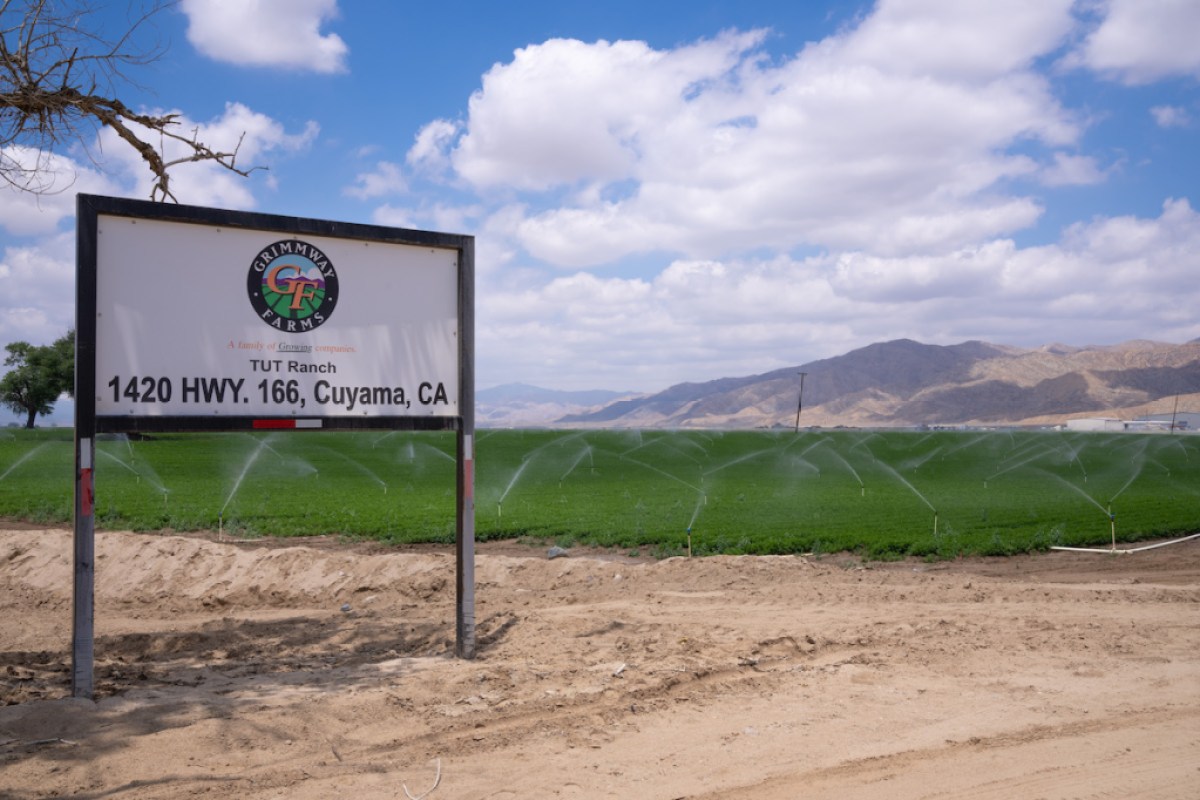
The Cuyama Valley, the driest region in Santa Barbara County, is awash in discontent. The world’s largest carrot producers, newly subject to restrictions on over-pumping, are suing all other landowners over water rights, and legal fees are mounting.
The Cuyama groundwater basin, which covers 380 square miles east of Santa Maria, overlapping with Kern, San Luis Obispo, and Ventura counties, is on the list of the state’s 21 basins in “critical overdraft.” Over time, more than twice as much water has been pumped out by farmers as has been replenished, resulting in ever-declining water levels underground. The valley gets an average 13 inches of rain per year; 10 is the definition of a desert. Wells are the only water supply here.
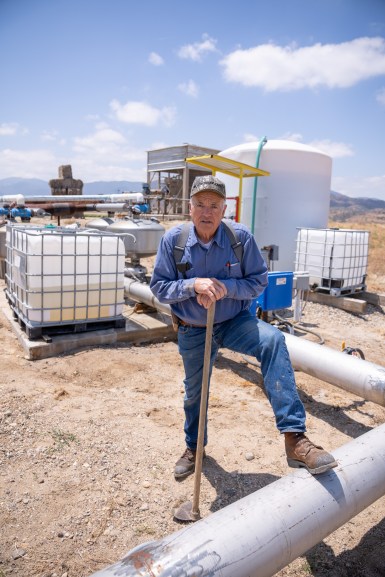
During the second half of the 20th century, alfalfa, a water-intensive crop, was largely responsible for the groundwater drawdown; today, carrots, a $69 million annual crop, are dominant, spurred by the demand for baby carrots.
Last year, records show, Grimmway Farms, the largest carrot corporation in world, and Bolthouse Farms, the second largest, pumped 28,500 acre-feet of water from the Cuyama basin — equivalent to nearly a year’s supply for three cities the size of Santa Barbara, population 87,000. The two companies, based in Bakersfield, are by far the biggest water users in the valley; they alone account for more than 40 percent of basin pumping.
“The thing that bothers me personally the most is that Bolthouse and Grimmway have known for years that every year, they lower their pumps, and they haven’t chosen to make any changes,” said Jim Wegis, a pistachio and olive grower who owns Triangle E Farms in Ventucopa, at the southeastern end of the valley. “They’re putting a real strain on everybody, trying to get that last little bit of water out.”
Under the state Sustainable Groundwater Management Act of 2014, depleted aquifers such as Cuyama’s must be back in balance by 2040. In May, the Cuyama Basin Groundwater Sustainability Agency (GSA), run by a group of county officials and major landowners, including Bolthouse and Grimmway and their supporters, announced the first-ever pumping restrictions here — a five percent cutback from 2021 levels.
Beginning in 2025, under a GSA plan that was approved by the state Department of Water Resources in May, the cutbacks are slated to increase to 6.5 percent yearly.
For now, the restrictions apply only to the flat central portion of the basin where the overdraft is most severe. Of about 32,000 acres here, Bolthouse and Grimmway own or lease more than half the land.
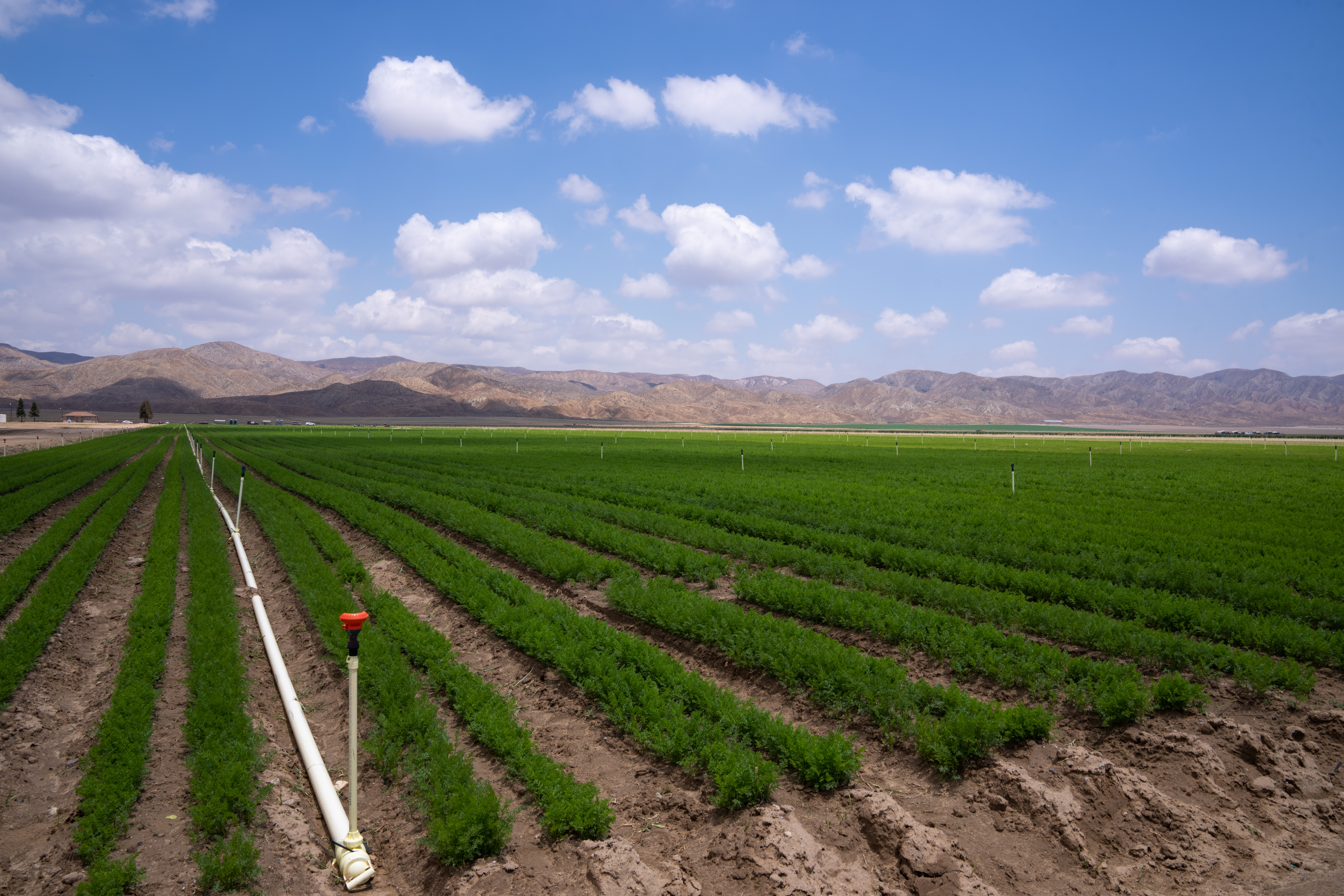
Lawyers’ Bonanza
To comply with the state’s 2040 deadline, pumping reductions on the order of 50 to 67 percent may be required basin-wide to achieve sustainability, the GSA says. That prospect is difficult enough.
But what’s really roiling the waters now is the lawsuit that was filed in Los Angeles Superior Court in 2021 by Grimmway Enterprises Inc. and its farm management companies; and Bolthouse Land Co. and Bolthouse Farms Inc. against “all persons claiming a right to extract or store groundwater “ in the Cuyama basin. The companies are asking a judge to assign specific water rights to each valley pumper, a complex and lengthy process called an adjudication.
Bolthouse and Grimmway also asked the judge to halt the schedule of pumping reductions until the case can be resolved — even though two of their past and present executives sit on the GSA board.
“How much worse can it get?” asked Jake Furstenfeld, manager of the Walking U Ranch and a member of the citizens’ advisory committee to the GSA. “They don’t want to cut back. They just want to bypass the whole plan. They want a different plan.”
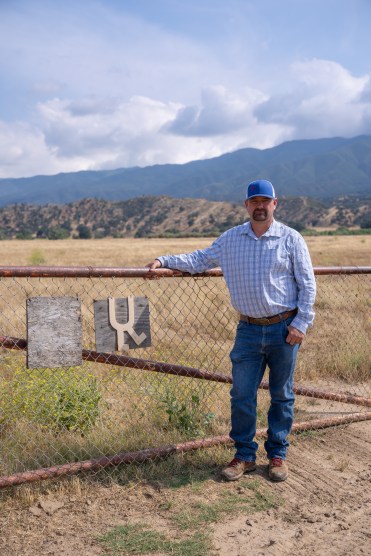
Wegis said: “Right now, the main basin has to take all the cuts. Bolthouse and Grimmway want to spread those cuts out to the entire basin. They’re trying to get a better deal from the court.”
The first trial in the case will be held in August to consider the basin boundaries. Court documents show that 90 landowners in the valley have hired 20 law firms to defend their water rights. They include pistachio, olive, apple, vegetable, alfalfa and cannabis growers; vintners; dairy owners; cattle ranchers; the Cuyama school district and two small water agencies. Santa Barbara County and the California Department of Fish and Wildlife are on the list of landowners, too.
By now, it’s likely that these defendants, including the water district representing 700 New Cuyama residents, have collectively spent several hundreds of thousands of dollars on lawyers’ fees — and the case could drag on for years. Residents say some of their neighbors are selling their trucks to pay lawyers’ fees; others are taking second jobs or postponing their retirement. Some are living on Social Security and have borrowed money from their children.
The places where most residents live — Cuyama, New Cuyama and Ventucopa — are all on the state’s list of “disadvantaged unincorporated communities,” or communities with low-income populations and unmet infrastructure needs.
“People are highly upset,” Furstenfeld said. “They know that Bolthouse and Grimmway have all the money in the world to carry on, and we’re going to get drug through a lawsuit we can’t afford. It’s very much a financial strain on a lot of people. Do you pay for the lawyer or do you feed your family? This is the modern-day David vs. Goliath, without a doubt.”
Roping In Small Users
Furstenfeld said he pumps water for his family and 32 cows. The water is stored in tanks to prevent losses from evaporation, he said, and he checks the lines daily, looking for leaks that coyotes may have chewed into them. Walking U is at the southwestern end of the valley; the ranch has not seen a drop in its well water levels since the 1970s, Furstenfeld said.
An estimated 200 owners of valley properties such as the Walking U Ranch use less than two acre-feet of water yearly, a tiny fraction of what the carrot companies consume. In court filings, they are called “de minimus pumpers.” An unknown number still have not been served with court papers, residents say. Those who have been served have been advised that if they fail to file a response in court, they risk losing their water rights altogether.
“Before the Court can determine what is de minimus water use in the Cuyama Basin, we need to better understand the number of pumpers and the quantity of water being pumped,” the Bolthouse and Grimmway lawsuit states.

Lawyers for Bolthouse and Grimmway declined to comment this month on the lawsuit or the companies’ farming practices. A reporter’s emails to corporate headquarters in Bakersfield requesting comment went unanswered. In court filings, the companies argue that the Cuyama basin adjudication is “necessary to protect the Basin’s limited water supply” and “ensure that the waters of the Basin are put to maximal reasonable beneficial use.”
“Plaintiffs bring this action to protect the general welfare of the Basin, protect Plaintiffs’ right to pump groundwater and to achieve sustainability of the Basin,” they state.
Water rights adjudications must resolve competing claims between those landowners who are using their well water on their own land and those who are shipping around their water. Some owners may claim “prescriptive rights” to water they’ve been drawing over time from another property, like a squatter’s claim to land. Relying on historic use to apportion water rights is fraught because some landowners have a history of conserving water and others don’t.

County Board of Supervisors Chair Das Williams, who represents the Cuyama Valley and sits on the GSA board, says Bolthouse and Grimmway should drop their suit. The GSA’s plan for ever-increasing pumping restrictions must be allowed to go forward, he said, “so that the basin doesn’t get worse and worse and wells don’t run dry.”
“I just hope they do some soul-searching and realize this adjudication is not good for the valley,” Williams said. “Their neighbors are being hurt. My constituents are all feeling nervous and insecure about the future of their water supply. The reality is, the government doesn’t want their water: It seems Bolthouse and Grimmway do.”
Baby Carrot Boom
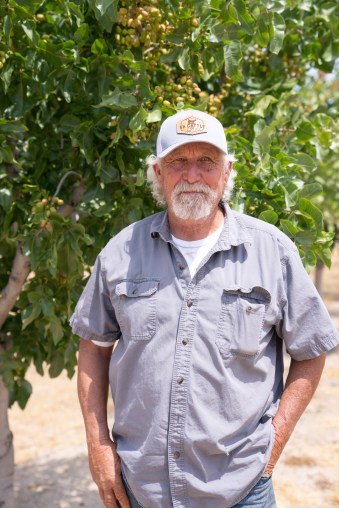
Baby carrots launched the massive expansion of carrot fields in the Cuyama Valley, starting in the 1990s. Bolthouse and Grimmway cut, peel and shave two-inch pieces out of carrots to create the wildly popular mini-snacks.
Today, the fields of Bolthouse and Grimmway stretch along Highway 166 between two mountain ranges as far as the eye can see. Their main crop is carrots, but they farm other vegetables, too. From March through September, their overhead sprinklers are running full blast, residents say, even when it’s hot and windy. The water levels in some of the wells in the central basin have dropped to more than 600 feet underground. According to the U.S. Geological Survey, some of the water being pumped out here is “fossil water” more than 30,000 years old.
Wegis said he and 10 other Ventucopa property owners, including olive and pistachio farmers Lee Harrington and his son, Jason, will argue in court that they are drawing water from a sub-basin of the valley that is not in overdraft. They believe that an earthquake fault blocks the underground flow of water from Ventucopa into the main basin. Their group has spent $150,000 in lawyers’ fees to date, Wegis said.
Wegis, a fourth-generation farmer in the valley, said he replaced most of his former 500-acre alfalfa operation years ago. With a drip irrigation system in place for his pistachio and olive trees, he says he’s cut his water use by three-quarters. He pumped 234 acre-feet of water last year, or less than one percent of what Bolthouse and Grimmway used.
“In this end of the valley, we’ve chosen to make changes,” Wegis said.
Of Bolthouse and Grimmway, Lee Harrington said, “We’re not begrudging them making money, but it’s not sustainable. We’re going to fight ‘em.”
Mounting Legal Fees
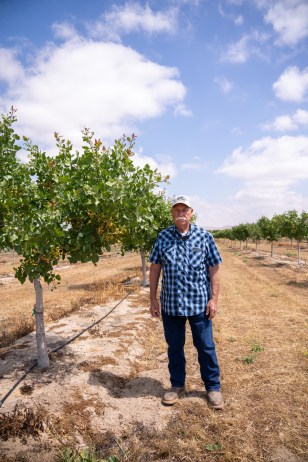
Gene Zannon, whose family owns the Santa Barbara Pistachio Co. and 420 acres of pistachios in the valley, is the fourth-largest pumper in the valley, after Grimmway, Bolthouse, and Kern Ridge Growers, GSA records show. But the water use at the Zannons’ farms, Tri-County Pistachios and Lucky Dog Ranch, was 2,220 acre-feet last year, or less than 8 percent of the total pumped by Bolthouse and Grimmway. Kern Ridge, in third place, used 3,033 acre-feet of water, or 11 percent as much as Bolthouse and Grimmway.
Zannon said he has spent $50,000 on lawyers’ fees so far to defend his family’s water rights.
“It’s a legal food fest that is sucking huge amounts of money out of the valley,” he said. “It has had a serious impact on the small landowners.”
Dave Lewis, who owns 40 acres of pistachios awaiting their first harvest in the central eastern Cuyama basin, said the lawyers’ fees — more than $5,000 to date for his property — are “eating me alive.” Lewis pumped 30 acre-feet of water in 2022, GSA records show.
“I was planning on retiring, but I don’t think I can, now,” Lewis said.
Alfonso Gamino, superintendent of the Cuyama Joint Unified School District, said his small district spent $6,750 in lawyers’ fees in June alone, plus $5,000 for a water meter. Most of the district’s 180 students come from low-income Latino families. Under Gamino’s leadership, the district recently emerged from a period in which it had been placed under a fiscal solvency plan by the county.
“Is it a burden? Sure it is,” Gamino said of the lawyers’ fees. “It takes away from the education of the children. It would have been nice if they had excluded the school district when this lawsuit was filed.”

In New Cuyama, a community of retirees, commuters and Latino farmworker families, the Cuyama Community Services District is paying off a loan for a million-dollar treatment plant that was installed in 2014 to remove arsenic from the water supply. Most of the plant was paid for in grant money, officials said, but the district owes $171,000 on a $240,000 loan. Amid those obligations, they said, the district has had to spend $41,000 this fiscal year on lawyers’ fees in the water rights lawsuit, or about 8 percent of its total budget.
Laura Price, co-owner of The Old Cuyama Store on Highway 166 and secretary of the Cuyama Mutual Water Co., representing 14 homes and businesses just east of New Cuyama, said the company has paid $4,000 in lawyers’ fees to date, “trying to protect the rights of our residents.”
“We’ve got a little bit in the bank, but that’s our contingency money if the well goes down,” Price said. “There’s going to come a point where we’re just not going to be able to keep paying out money for an attorney. I think it’s sad when large companies like that can go after so many people who have no means of protecting themselves.”
‘A Bad Feeling’
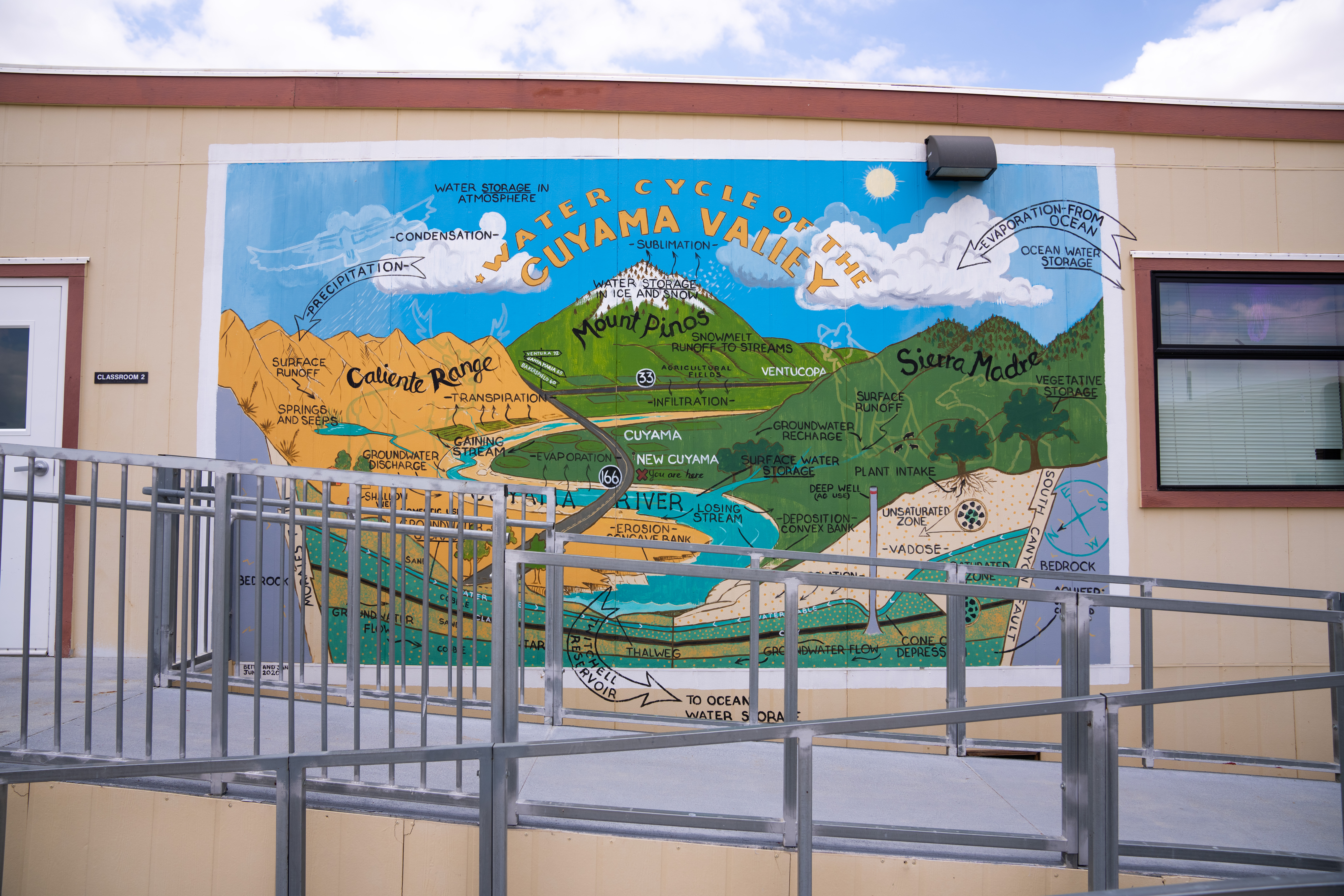
The Cuyama water rights adjudication lawsuit is one of six filed in California since the Legislature passed the Sustainable Groundwater Basin Management Act in 2014. A “friendly” lawsuit to adjudicate the declining basin underlying Borrego Springs in San Diego County was resolved after 15 months of negotiations, with the Borrego water district, resort owners and grapefruit growers agreeing to slash their water use by 74 percent by 2040.
But friendly negotiations are not the norm. After five years of squabbling, a court judgment was entered in June in a water rights adjudication case in the Las Posas Valley of Ventura County.
The Bolthouse and Grimmway lawsuit “has a bad feeling to it,” said Eric Hvolboll, who co-owns two ranches in the Cuyama Valley, one at the western end and the other in Salisbury Canyon. “It seems we have these out-of-town people who are avaricious and are lawfully taking advantage of an archaic law to the economic detriment of their neighbors.”
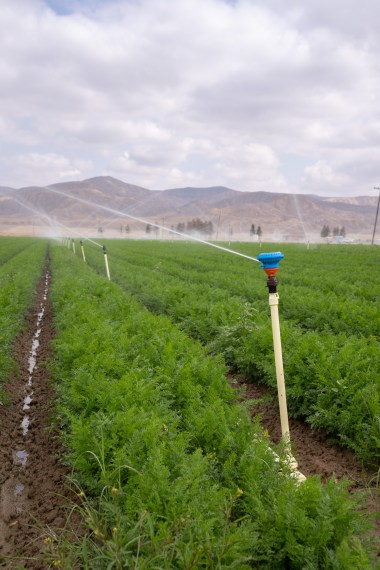
A bill now making its way through the state Legislature, AB779, would encourage the court to “consider the water use of small farmers and disadvantaged communities … before entering a judgment” in a groundwater rights adjudication.
It’s not clear how the court ruling in the case will affect the GSA’s plan for cutbacks, but state law will require some compatibility between the two. Under the law, an adjudication cannot “substantially impair” the ability of a GSA or the state “to achieve sustainable groundwater management.”
Anthony Leggio of Bakersfield is president of Bolthouse Properties; manager of Bolthouse Land Co.; and a director of Tejon Ranch, the largest expanse of private land in California. Jeffrey Dunn is CEO of Bolthouse Farms. Jeff Huckaby of Arvin is president and CEO of Grimmway Farms and CEO of Grimmway Enterprises. Other plaintiffs in the water rights lawsuit include Grimmway’s farm management companies: Diamond Farming, Lapis Land, and Ruby Land.
Matt Vickery, the director of land and water resources at Grimmway; and Derek Yurosek, the former vice president of real estate at Bolthouse Properties and vice president of agricultural operations at Bolthouse Farms and the current managing director of Arable Capital Partners, a Bakersfield agribusiness investment firm, have both occupied leadership roles on the GSA board. They did not respond to recent requests for comment on the lawsuit or the GSA’s plan for pumping cutbacks.
Vickery is presently vice chair of the GSA board. Yurosek, whose grandfather, Mike Yurosek, invented baby carrots, was voted out as chairman on May 3. The minutes of the meeting show that a narrow majority of board members backed Cory Bantilan for the post: he is chief of staff for Santa Barbara County Supervisor Steve Lavagnino, who represents Santa Maria. Board members who voted for Bantilan spoke in favor of a “neutral” and “objective” chairperson, noting also that the water rights lawsuit was costing landowners “a significant amount of money in legal fees.”
Asked by one board member whether the lawsuit disqualified Yurosek from serving as chairman, the board’s attorney said it did not. “All landowners are in the same position” in such lawsuits, he said. Yurosek remains a GSA board member.
Melinda Burns is an investigative journalist with 40 years of experience covering immigration, water, science, and the environment. As a community service, she offers her reports to multiple publications in Santa Barbara County, at the same time, for free.
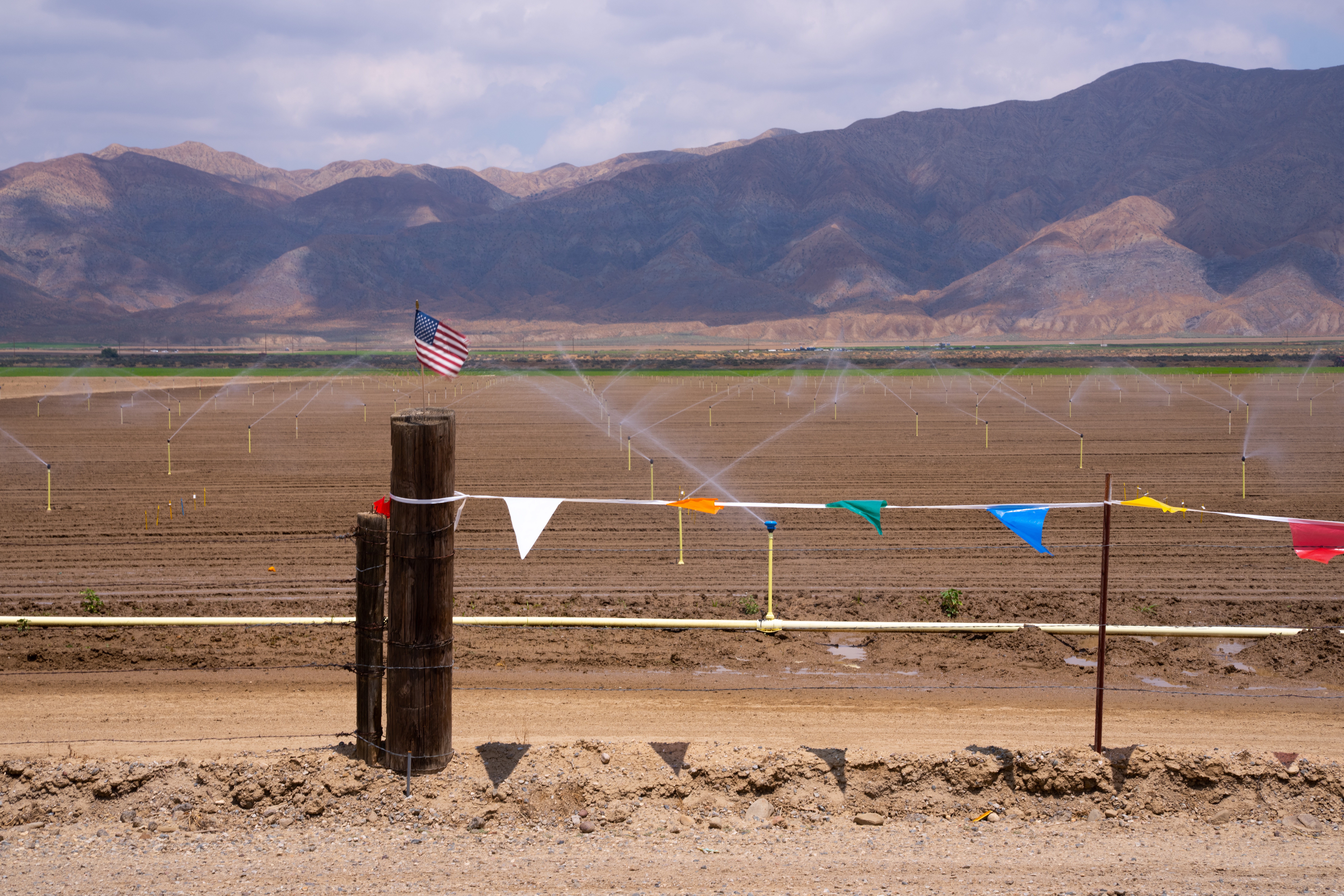


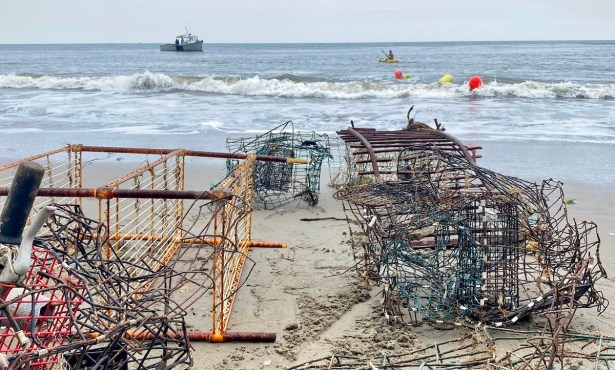

You must be logged in to post a comment.